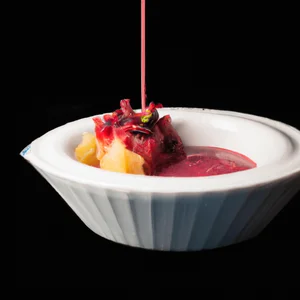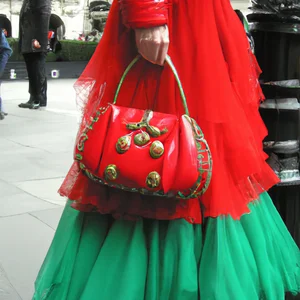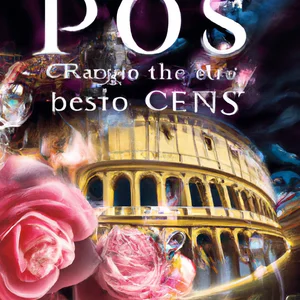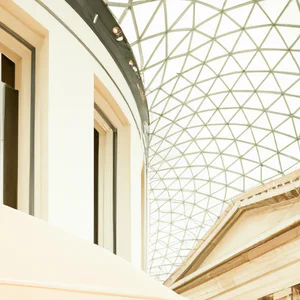Book your experience
The best dim sum restaurants in London: a journey into Cantonese tradition
The best places to eat dim sum in London: a dive into Cantonese tradition
So, let’s talk about dim sum, which are basically like little culinary delights, right? And London, with its myriad of restaurants, is a real paradise for lovers of these dishes. In short, if you are a fan of Cantonese cuisine, I recommend you visit some dim sum restaurants.
For example, there is that place called “Yum Cha”, which is a real gem. The first time I went, I felt like an explorer in a Hong Kong market. The variety of dishes is incredible: from steamed ravioli to the famous buns, you never stop discovering. And then, there’s that trolley thing that goes around the restaurant with delicacies… it’s a bit like a carousel, but with food!
And I can’t help but mention “Hakkasan”, which is a little more elegant, I tell you. There, the dim sum has a touch of class. But, I have to admit, the prices are a little higher, so maybe not the place to go every day, unless you have a superhero bank account. But, every now and then, there’s also a bit of luxury, right?
Then, there is “Dim T”, another restaurant that impressed me. I tried their spring rolls and oh my goodness, they were so crispy it felt like they were dancing in your mouth. Maybe they aren’t the most traditional, but who cares, they were delicious!
Now, I don’t want to sound like a know-it-all expert, huh. I think the great thing about dim sum is also that you can share it. It’s a bit like being with family, chatting and savoring every bite together. It’s an experience that makes you feel close to others, really.
In conclusion, if you are in London and want a trip into the heart of Cantonese tradition, you can’t miss these dim sum restaurants. And who knows, maybe you’ll even find your favorite dish along the way. But, well, I don’t promise to be your gastronomic guide, eh? You may get lost in some corners, but in the end it will be worth it!
Discover the secrets of dim sum in London
When I first stepped into a dim sum restaurant in London, the scent of steam and spices enveloped me like a warm hug. The hum of Cantonese conversations and the clink of porcelain plates created a vibrant and welcoming atmosphere. Every small dish that was brought to the table seemed to tell a story, and so I began my journey to discover one of the British capital’s best-kept culinary secrets.
An authentic dining experience
London, with its extraordinary cultural diversity, offers a range of dim sum restaurants ranging from the traditional to the more innovative. According to a recent Time Out article, restaurants like Yauatcha and Hakkasan are celebrated for their fusion of Cantonese cuisine and modernity, while more authentic spots like Dumplings’ Legend in Chinatown offer a gastronomic experience that takes you directly back to the origins of dim sum. Here, you can taste the original xiaolongbao (steamed dumplings filled with broth) and discover the correct way to eat them: using a spoon to scoop up the broth before biting into the dumpling, to avoid burning yourself.
Insider tip
A little-known tip: for an authentic experience, visit dim sum restaurants during tea time, which is a particularly lively and varied time. Not only will you have access to special dishes, but you will also be able to observe how local families gather around the tables, creating a warm and family atmosphere.
A cultural bond
Dim sum is not just food; it’s a social experience. Originating from the Cantonese tradition, this way of eating has deep roots in Chinese culture, often associated with moments of celebration and conviviality. The practice of “yum cha”, which means “drinking tea”, accompanies dim sum and represents a ritual of connection between friends and family. Even in London, dim sum is a way to experience and share this cultural tradition, helping to keep the Cantonese heritage alive in the heart of the metropolis.
Sustainability
In an age where sustainability is crucial, some dim sum restaurants in London are adopting eco-friendly practices, such as using organic ingredients and reducing food waste. Places like Green Tea Restaurant not only serve delicious dim sum, but are also committed to using local suppliers, thus helping to promote responsible tourism.
Immerse yourself in the flavors
Imagine yourself sitting at a round table, surrounded by plates of har gow (shrimp dumplings) and char siu bao (steamed pork-filled buns). Each bite is a journey of flavors that transports you directly to the streets of Canton. We invite you to explore this world through a visit to Chinatown London, where you can also find local markets offering fresh ingredients to try recreating your favorite dim sum at home.
Final reflection
Exploring the world of dim sum in London is not just a gastronomic experience, but an opportunity to immerse yourself in a rich and varied culture. Have you ever wondered what stories lie behind each dish? Or what life experiences can be shared around a table laden with dim sum? The next time you enjoy a steamed dumpling, remember that you are savoring not only a dish, but also a piece of history and tradition.
The most authentic dim sum restaurants
When I first set foot in a dim sum restaurant in London, I was about to have an experience that would change the way I perceived food. The air was filled with the scent of steam and spices, and the sound of carts rolling between tables created a vibrant and convivial atmosphere. There wasn’t just food, but a real ritual. In that moment, I understood that dim sum is not just a meal, but a way of socializing, an experience to be shared.
Restaurants not to be missed
London is dotted with authentic dim sum restaurants, and for those seeking the true taste of tradition, Yauatcha is a must-visit. Located in the heart of Soho, this restaurant combines Chinese culinary art with a modern twist, offering a selection of dim sum including the famous har gow and siu mai. If you want a more traditional feel, Royal China is a great choice, with its carts full of goodies flowing between tables, while Dim T offers a more casual but equally tasty experience , with several locations in the city.
An insider tip
A little-known tip is to visit dim sum restaurants during opening hours, often before 12pm. This is the time when the dishes are the freshest and the choices are widest. Also, don’t hesitate to order dishes you’re unfamiliar with; the culinary adventure is part of the joy of dim sum!
Cultural impact
Dim sum has a rich history dating back to southern China, where it was traditionally served as a snack for travelers. In London, this dish has found a new meaning, becoming a symbol of a culture that celebrates conviviality and sharing. It is a bridge between Chinese culinary traditions and British urban life.
Sustainability and responsibility
Many dim sum restaurants are starting to adopt sustainable practices, using local and organic ingredients. It is an important step towards responsible gastronomic tourism, which allows you to enjoy delicious dishes without compromising the future of our planet.
An experience worth trying
For a truly unique experience, join a dim sum workshop, where you can learn to prepare your own dumplings under the guidance of expert chefs. This is an opportunity to immerse yourself in Chinese culinary culture and take a piece home of this experience.
Myths to dispel
A common misconception is that dim sum is only a brunch option. In reality, it is a versatile meal served at any time of the day, making it perfect for a lunch or dinner with friends.
Final reflection
Next time you are in London, ask yourself: What better way to connect with a different culture than through food? Dim sum, with its variety of flavors and fascinating history, is an invitation to explore not only the dishes, but also the stories and traditions that accompany them.
Culinary Experiences: A tour in the heart of Chinatown
A journey into flavors
I still remember my first taste of dim sum in the heart of London’s Chinatown. It was a spring morning and the air was full of exotic aromas. I found myself in front of a restaurant that looked like a hidden treasure, with traditional decorations and a coming and going of hungry customers. I ordered a plate of har gow and siu mai, and each bite took me on a sensory journey between tradition and innovation. This is just one of the many magical moments that can be experienced in this vibrant community.
Where to go and what to expect
Chinatown, located a short walk from Leicester Square, is a neighborhood rich in history and culture. The dim sum restaurants here offer a wide variety of dishes that tell stories of centuries. Among the most authentic gems, Yauatcha and Hakkasan stand out for their elegance, while the Four Seasons is famous for its grilled chicken and generous portions. For a more casual experience, don’t miss Dumplings’ Legend, where dim sum is prepared fresh before your eyes.
An insider tip
If you want a truly unique experience, try visiting Chinatown during dim sum breakfast. This is a magical time when families gather and restaurants offer special dishes at discounted prices. Don’t forget to order the char siu bao (pork buns) and accompany them with oolong tea for a perfect pairing.
The cultural impact of Chinatown
Chinatown in London is much more than just a neighborhood; it is the beating heart of a community that celebrates its cultural heritage. Dim sum restaurants are not just places to eat, but spaces where stories, traditions and a sense of belonging intertwine. Each dish is a celebration of Chinese culinary roots, which have adapted and integrated into London culture.
Sustainability and responsibility
More and more Chinatown restaurants are embracing sustainable practices, using local and organic ingredients. For example, Bao is committed to reducing food waste and serving dishes that respect the environment. It is important to support these initiatives, contributing to responsible and aware tourism.
The atmosphere of Chinatown
Getting lost in the streets of Chinatown is an experience that involves all the senses. The red lanterns hanging above the restaurants, the scent of spices wafting in the air and the laughter of the customers create a vibrant and welcoming atmosphere. There is nothing more fascinating than seeing dim sum being prepared on sight, while the staff moves gracefully in a culinary ballet.
Recommended activities
In addition to enjoying dim sum, I recommend taking a walk to explore tea shops and bakeries offering Chinese sweets. Don’t forget to enjoy a mooncake during your visit! You can also take a cooking class to learn how to make your own dim sum and bring a piece of Chinatown home.
Myths to dispel
A common misconception is that dim sum is just a dumpling meal. In reality, the variety is very vast and includes meat, fish and vegetable dishes, as well as desserts. Don’t limit yourself to ordering only the most well-known dishes; explore and discover the wealth of flavors that Chinatown has to offer.
A final reflection
You visit Chinatown for its flavors, but you return home with stories and connections that go beyond the table. What is your favorite dim sum dish and what story would you like to share? Be inspired by this corner of London and discover how food can unite cultures and people.
Dim sum and culture: a deep connection
A personal experience
I still remember the first time I tasted dim sum in a small restaurant in London’s Chinatown. It was a rainy afternoon and, while the world outside rushed past umbrellas and waterproof jackets, I found myself immersed in a warm and welcoming atmosphere. The scent of small delicacies wafted through the air as carts filled with dumplings and bao moved between the tables. Each bite seemed to tell a story, a link between tradition and modernity.
The cultural significance of dim sum
Dim sum is not just food; it is a social ritual that has its roots in Chinese culture. Originally served as a snack for travelers along the Silk Road, dim sum has become a way for families and friends to gather, share dishes and converse. In this context, in London, dim sum represents a microcosm of the city’s multiculturalism, where traditions mix and renew themselves. According to an article in the Guardian, Chinatown’s food scene is a perfect example of how culinary traditions can evolve while maintaining their essence.
An insider tip
If you want an authentic dim sum experience, try to visit a restaurant during lunch hours on weekdays. Many locals come together to enjoy these delights in a vibrant and convivial atmosphere. Also, don’t be afraid to ask waiters to recommend lesser-known dishes; Often, it’s insider recommendations that reveal the menu’s hidden gems.
Cultural impact and sustainability
The importance of dim sum goes beyond simple gastronomic pleasure. In an age of increasing focus on sustainability, many restaurants in London are adopting responsible practices, using fresh, local ingredients. This not only supports the local economy, but also helps preserve the authenticity of the dishes. Restaurants like Yauatcha and Dumplings Legend are examples of how tradition and modernity can be combined in a sustainable way.
Immerse yourself in the atmosphere of Chinatown
Imagine sitting in a crowded restaurant, surrounded by the sounds of lively conversations and the scent of steaming dishes. The atmosphere of Chinatown is vibrant, with the colors of the lanterns intertwining with the animation of the markets. Every visitor is invited to immerse themselves in this unique sensorial experience, which goes beyond simple tasting.
Try the homemade dim sum
For an even more authentic experience, consider attending a dim sum cooking workshop. At places like The Cookery School in London, you can learn to prepare your own dishes, discovering the secrets behind each recipe. This not only enriches your dining experience, but also gives you a deeper connection with Chinese culinary culture.
Myths and misconceptions
A common misconception is that dim sum is just a meal to be eaten for breakfast or lunch. In fact, it is a versatile meal that can be enjoyed at any time of the day. Furthermore, many mistakenly think that dim sum is exclusively meat-based; in fact, there are numerous vegetarian and vegan options worth exploring.
A final reflection
Next time you’re in London, take a moment to reflect on how dim sum represents a deep cultural connection and an opportunity to connect with global traditions. What new dish would make you discover an unexpected side of Chinese culture?
The best dishes not to be missed
A journey through flavours
The first time I tasted dim sum in London, I was in the beating heart of Chinatown, surrounded by an explosion of colors and scents. My attention was caught by a small restaurant, with a long line of people waiting. I decided to join, unaware of what awaited me. When I finally sat down, the table was filled with small dishes, each more intriguing than the last. That day I discovered that dim sum is not just a meal, but a social experience that celebrates conviviality.
The unmissable dishes
When it comes to dim sum, some dishes are real must-trys. Here is a selection of the best:
- Har Gao: These translucent shrimp dumplings are a classic. Their delicacy and flavorful filling is an experience that every dim sum lover must try.
- Siu Mai: Another icon, siu mai are open dumplings filled with pork and prawns, often garnished with a pea. Their smooth texture and rich flavor are irresistible.
- Char Siu Bao: Steamed buns filled with sweet roasted pork. The softness of the bun and the succulent filling create a perfect combination.
- Cheung Fun: Stuffed rice noodles, usually filled with shrimp or pork, served with a sweet soy sauce. Their smooth texture is a joy for the palate.
- Egg Tarts: for a sweet finish, don’t forget the egg cream tarts. These little delights are a perfect way to end your dim sum meal.
An insider tip
A trick that few know is to ask the staff what the dishes of the day are. Dim sum restaurants often offer specialties that are not on the standard menu, but which can prove to be true culinary gems. Don’t be afraid to experiment!
The cultural impact of dim sum
Dim sum has deep roots in Chinese culture, dating back to the Song Dynasty. Originally served along the streets to accompany tea, it has become a symbol of conviviality and socialization. In London, dim sum has found a home in Chinatown, where families and friends gather to share delicious dishes and stories.
Sustainability and dim sum
In recent years, many dim sum restaurants in London have embraced greener practices, using fresh, sustainable ingredients. Some venues partner with local suppliers to ensure their dishes are not only delicious, but also environmentally responsible. Choosing to eat at these restaurants not only satisfies your palate, but also supports the local economy!
An experience worth trying
If you’re craving an authentic experience, I recommend attending a dim sum workshop. Several restaurants offer cooking classes where you can learn to make your own ravioli, making your culinary journey even more memorable.
Myths to dispel
A common misconception is that dim sum is just a brunch meal. In fact, it can be enjoyed at any time of the day! Don’t limit yourself to trying it only on the weekend; many restaurants also serve dim sum for dinner.
Final reflection
Next time you venture to Chinatown, ask yourself: What’s your favorite dim sum dish? And, above all, are you ready to discover new flavors and dishes that might surprise you? The vibrant atmosphere and delicious flavors of dim sum in London await you!
Unconventional tips for a dim sum brunch in London
Once upon a time, on a cool Sunday morning in London, I decided to explore the fascinating world of dim sum. After wandering through the narrow streets of Chinatown, I found myself in a small restaurant, almost invisible to tourists, where an elderly lady prepared dim sum with a skill that seemed to have been passed down for generations. I never imagined that brunch would change the way I see Chinese cuisine. The scent of steamed dumplings and the sound of the pots bubbling created a magical atmosphere, and every bite was a journey into flavours.
Choosing the right time
An unconventional tip I’ve discovered is to avoid classic brunch time. Many visitors flock to dim sum restaurants between 11am and 2pm, but if you can time your visit for 10.30am or after 3pm, you may discover a completely different experience. Not only will you have a guaranteed seat, but you will also enjoy a quieter atmosphere and more attentive service. Restaurants like Yauatcha and Dumplings Legend are perfect for a late brunch, where you can savor their famous har gow and siu mai with a fragrant cup of tea.
A touch of history
Dim sum is not just a simple meal; it’s a cultural ritual that dates back centuries, where travelers on the Silk Road routes stopped to enjoy small plates of delicacies. Today, in London, this tradition has evolved, but the connection with authenticity remains strong. Chinatown’s restaurants, often family-owned, offer a taste of this history, making each visit not just a meal, but also a moment of cultural connection.
Sustainability on the table
In an age where sustainability is key, many dim sum restaurants in London are adopting eco-friendly practices. Bun House, for example, uses organic and local ingredients, thus reducing its environmental impact. Choosing restaurants that follow these practices not only enriches your dining experience, but also contributes to a more sustainable future.
An idea for your brunch
To make your dim sum brunch even more memorable, try attending a cooking workshop. Several culinary schools in London offer courses to learn how to make your own dim sum, allowing you to bring a piece of this culture home. It’s an excellent way to deepen your knowledge and, why not, amaze your friends with your new cooking skills.
Myth Busting: The myth of “everything fried”
A common misconception is that dim sum is all fried. In fact, the variety of dishes is vast and includes steamed, stuffed and even sweet options. The beauty of dim sum lies in its diversity, so don’t be afraid to explore new flavors!
This experience taught me that dim sum brunch is not just a way to feed yourself, but an opportunity to immerse yourself in the culture and history of a rich culinary tradition. We invite you to consider: what flavors and stories might you discover at your next brunch in London?
Sustainability: where to enjoy eco-friendly dim sum
A personal experience that changes perspective
On a recent visit to London, I found myself having lunch at a dim sum restaurant that not only served delicious dishes, but was actively committed to sustainability. While I savored a fresh har gow, the owner told me how his place had implemented eco-friendly practices, such as the use of organic ingredients and local suppliers. This meeting made me reflect on how much our choice of where to eat can affect the environment and the community.
Eco-friendly dim sum restaurants in London
London offers several options for those who want to enjoy dim sum responsibly. Here are some restaurants to consider:
- Yauatcha: In addition to being famous for its fine selection of dim sum, Yauatcha uses sustainable ingredients and has won recognition for its eco-friendly practices.
- Hakkasan: This high-class restaurant chain is known for its sustainable practices, from responsible ingredient sourcing to waste-reducing policies.
- Dim T: a restaurant that is committed to offering fresh and sustainable dishes, with particular attention to reducing waste plastic and the choice of eco-friendly packaging.
An insider tip
If you want an authentic experience, try attending a sustainable dim sum cooking workshop. Several local organizations offer classes where you can learn to make dim sum using fresh, seasonal ingredients. This not only enriches your dining experience, but also gives you the opportunity to bring home a piece of Chinese culinary culture.
Cultural and historical impact
Dim sum is not just a meal; it is a tradition that has its roots in southern China, where it was served as a snack for travelers along the Silk Road. Today, this tradition has taken on a new dimension in London, where eco-friendly dim sum reflects the growing focus on sustainability and environmental awareness.
Sustainable tourism practices
By choosing to eat at restaurants that employ sustainable practices, you are not only supporting the environment, but also local communities. Responsible tourism is fundamental to preserving culture and traditions, and the choice of where to eat plays a crucial role in this process.
An activity worth trying
An interesting activity not to be missed is the dim sum brunch at The Duck and Rice, a pub that offers a unique experience, combining British pub culture with dim sum. Here you can enjoy dishes prepared with fresh ingredients, while enjoying a lively and welcoming atmosphere.
Myths and misconceptions
A common misconception is that dim sum is only a lunch option, but in reality, many restaurants also serve dim sum for dinner and offer a variety of dishes that can be enjoyed at any time of the day. Furthermore, the quality and authenticity of the dishes must never be compromised to be sustainable.
Final reflection
Next time you sit down to dim sum in London, consider the impact of your choices. How can your food preferences contribute to a more sustainable future? The beauty of dim sum lies not only in its flavor, but also in the history and practices surrounding it. Are you ready to discover the authenticity and sustainability of this culinary tradition?
History of dim sum: a journey through time
Do you remember the first time you tasted dim sum? The first time steam tickled your nose as a trolley approached, packed with little delights? My experience took place in a restaurant overlooking a canal in London, where the sunlight filtered through the white porcelain plates, illuminating the table of friends and strangers, all intent on sharing a moment of pure conviviality. This is precisely the magic of dim sum: it is not just a meal, but a ritual, a tradition that brings with it centuries of history and culture.
The origins of dim sum
Dim sum has ancient roots, dating back to the Tang Dynasty (618-907 AD), when travelers along the Silk Road stopped to enjoy small portions of food. Over the centuries, this practice has evolved, becoming a symbol of Cantonese culture and a way to socialize. Today, in London, dim sum is a truly unique experience, where tradition and innovation come together in a cosmopolitan context.
An insider tip
If you want an authentic dim sum experience in London, I recommend visiting the Chinese markets during the week. Many restaurants offer lunch specials that you won’t find on weekends. This will not only allow you to save money, but also to enjoy a quieter atmosphere, away from the tourist crowds. One of the most renowned places is Yauatcha, famous for its creative dim sum and elegant ambiance.
The cultural impact
Dim sum has a significant cultural impact, not only in China but also in London’s Asian community. It represents a moment of togetherness, where families and friends gather to enjoy a variety of dishes together. Furthermore, the growing interest in dim sum has led to the growing popularity of events and festivals dedicated to this food, such as Chinatown Festival, which celebrates Chinese culinary and cultural traditions.
Sustainability in dim sum
In recent years, many London restaurants have embraced sustainable practices, using local and organic ingredients to prepare their dim sum. Opting for restaurants that follow these practices not only supports the local economy, but also contributes to the health of our planet.
An invitation to explore
Imagine sitting at a table laden with small bamboo baskets, each containing a surprise of flavours. Don’t miss the opportunity to taste har gow (prawn dumplings) or siu mai (steamed pork and prawn dumplings), dishes that tell stories of traditions handed down from generation to generation. And while you enjoy these delights, ask the restaurant staff to share some anecdotes about their history and the preparation of the dishes.
Myths to dispel
A common misconception is that dim sum is just a type of dumpling. In fact, dim sum includes a wide range of dishes, including spring rolls, rice cakes and even desserts. Each dish has its own history and tradition, making each meal a journey through Chinese culture.
A final reflection
As you savor a bite of dim sum, take a moment to reflect on how this simple meal represents a connection between people, a celebration of culture and history. The next time you are in London, we invite you to explore this fascinating world of flavors and colours. Which dim sum will you try first?
Local events: Dim sum festival in London
I vividly remember the first time I attended a dim sum festival in London. It was a sunny day and the atmosphere in the heart of Chinatown was electric. The streets were adorned with red lanterns and the delicious scents of steamed dumplings and stuffed buns mingled in the air. The joy of being able to enjoy different variations of dim sum, all in one location, was contagious. Every corner was alive with people laughing, chatting and, of course, eating!
Festivals not to be missed
In London, dim sum festivals are annual events that attract not only fans of Chinese cuisine, but also anyone who wants to explore new flavours. One of the most celebrated festivals is Chinese New Year in Chinatown, where local restaurants come together to offer special dim sum dishes. Other events, such as the Dim Sum Festival held every summer, offer the chance to enjoy unique dishes and participate in cooking workshops. These events not only celebrate food culture, but are also an opportunity to learn about Cantonese tradition in a deeper way.
An insider tip
An insider tip? Arriving early is key, as festivals can get very crowded. If you want to avoid long queues, consider visiting during opening hours, when restaurant stands have just been set up. Also, don’t forget to taste the regional specialties that are often only available during these events. You might discover a dim sum you’ve never tried before!
The cultural impact
These festivals are not just an opportunity to eat; they represent an important celebration of Chinese culture in London. Dim sum is a symbol of conviviality and sharing, and attending a festival is a way to immerse yourself in a tradition that dates back centuries. Dim sum cuisine is linked to moments of celebration and gathering, and festivals offer a platform to honor these traditions.
Sustainability at festivals
An increasingly important aspect of dim sum festivals is the focus on sustainability. Many participating restaurants are committing to using fresh, local ingredients, reducing waste and promoting eco-friendly practices. It’s a way to enjoy culinary tradition without compromising our planet.
An experience worth trying
If you’re planning to visit London during one of these festivals, make sure you bring a group of friends with you. Sharing plates of dim sum is a key part of the experience, and it will be more fun to try different specialties together. Don’t forget to take a stroll through the streets of Chinatown, where the lively atmosphere and colors of the celebrations make everything even more memorable.
Myths to dispel
A common misconception is that dim sum is only for brunch. In fact, you can enjoy them at any time of the day, and festivals offer a great opportunity to do so. Don’t limit yourself to visiting restaurants only during lunch hours; discover how dim sum can be a delight to enjoy even in the evening, with a variety of dishes that will surprise you.
In conclusion, attending a dim sum festival in London is much more than just a meal; is a culinary adventure that celebrates culture and community. We encourage you to consider planning your visit during one of these events. Which dim sum are you looking forward to trying?
The magic of homemade dim sum: where to try it
An unforgettable experience
I still remember my first encounter with homemade dim sum. I was sitting at a table in a small restaurant in Chinatown, surrounded by families giggling and passing steaming plates. The waitress, with a warm smile, served me a plate of har gow (shrimp dumplings) that seemed to tell stories of tradition and love. It was at that moment that I understood that dim sum is not just food, but a shared experience, a bond between people and cultures.
Where to find homemade dim sum
In London, several hidden gems offer the opportunity to enjoy dim sum prepared with fresh ingredients and traditional techniques. One restaurant that deserves a mention is Dim T, where you can watch your favorite dishes being prepared. Located in the heart of Chinatown, this venue is known for its commitment to quality and freshness. Other options include Yum Cha, where the dim sum tradition has been carried on for generations.
An insider tip
If you want an authentic experience, ask about a dim sum making workshop at School of Wok. Here, you can learn how to make your own ravioli and understand the culinary philosophy behind every bite. Don’t forget to take your creation home – there’s nothing more satisfying than sharing your own homemade dim sum with friends and family.
The cultural impact of dim sum
Dim sum has deep roots in Chinese culture, originating as a meal for travelers who stopped at teahouses. Today, in London, it represents a meeting point between different cultures, where traditional dishes blend with modern influences. This cultural exchange contributes to a deeper understanding between communities, making dim sum a symbol of unity and conviviality.
Responsible tourism practices
Many dim sum restaurants in London adopt sustainable practices, such as using local and organic ingredients. Choosing to eat at these locations not only enhances your dining experience, but also supports the local economy and reduces your environmental impact.
A vivid and engaging atmosphere
Imagine entering a crowded restaurant, the scent of the dishes mixing with the sound of laughter and chatter. Each table is a microcosm of stories and traditions, while the dim sum carts move like an orchestrated ballet. It’s an experience that involves all the senses and makes you feel part of something bigger.
Myths about dim sum
A common misconception is that dim sum is just a brunch meal. In fact, it can be enjoyed at any time of the day, and many restaurants offer a wide range of options for dinner too. In fact, dishes can vary greatly, so don’t hesitate to explore beyond the classic ravioli and roulades.
A final reflection
Homemade dim sum is more than just a meal; it is a journey through culture and tradition. We invite you to consider: what story will your dishes tell when you share them with the people you care about? Try to be inspired by the magic of dim sum and discover how this culinary experience can enrich not only your palate, but also your heart.

 Architecture and Design
Architecture and Design Cities and Regions
Cities and Regions Culture and History
Culture and History Events and Festivals
Events and Festivals Fashion and Shopping
Fashion and Shopping Food and Wine
Food and Wine Nature and Adventure
Nature and Adventure Unique Experiences
Unique Experiences



























